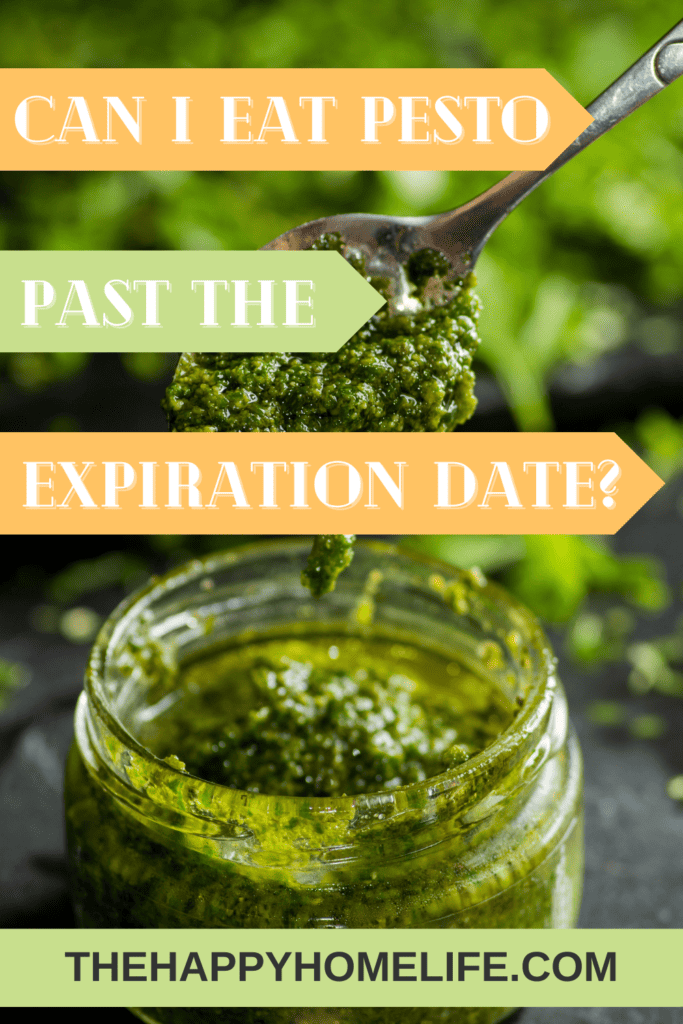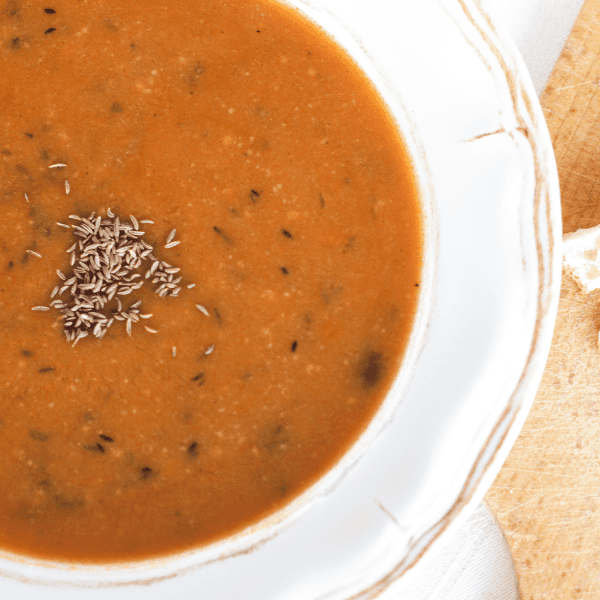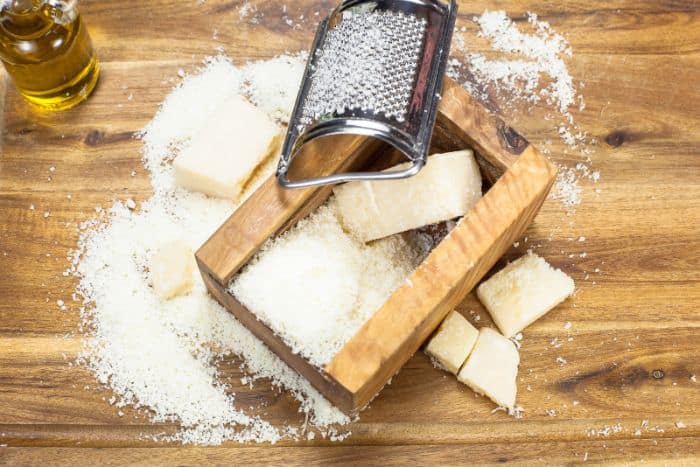Can I eat pesto past the expiration date? Let’s find out! Have you ever found yourself staring at a container of pesto, wondering if you can still use it past its expiration date? We’ve all been there. After all, pesto is a delicious and versatile sauce that can elevate even the simplest of dishes.
But when it comes to food safety, it’s important to know if pesto goes bad and when it’s time to toss it out. In this article, we’ll dive into the facts about pesto shelf life, storage, and spoilage to help you determine whether that jar of pesto in your fridge is still safe to eat.
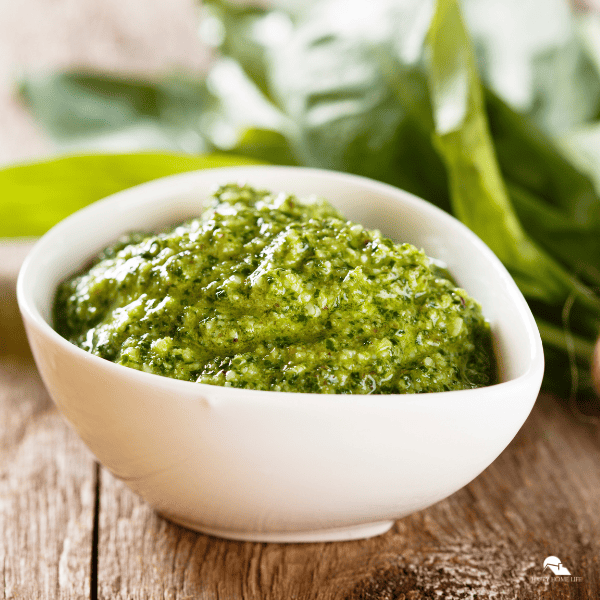
If the pesto is past its expiration date, it can still be safe to eat if properly stored and handled. However, it’s important to inspect the pesto for any signs of spoilage, such as changes in color, texture, or smell, before consuming it. Generally, pesto should be used within 3-4 days after opening, and shelf-stable varieties can last a few months beyond the printed date.
Always follow the storage and consumption guidelines provided by the manufacturer, and when in doubt, it’s better to err on the side of caution and discard the pesto to avoid any potential health risks.
You might enjoy these recipes:
How long can pesto last in the fridge?
Once, pesto can last for 4 to 7 days in the refrigerator. However, this timeframe can vary depending on the specific brand and type of pesto. Homemade pesto typically has a shorter lifespan in the fridge, lasting only 3 to 4 days. It’s important to properly store the pesto in the fridge to maximize its shelf life.
Always ensure the container is tightly sealed and kept in a cool, dry place away from sunlight and heat sources. If you have leftover pesto that you won’t be able to consume within the recommended time frame, consider freezing it for longer storage.
How long can you keep pesto?
The life of pesto varies depending on various factors, including the preparation method and storage conditions. Typically, refrigerated pesto will last for 1-3 weeks in the fridge and can be frozen to last longer. Once opened, it should be stored in an airtight container and placed in the refrigerator.
Shelf-stable pesto can be kept in a cool, dry place away from sunlight and heat. Homemade pesto can last for up to a week when stored in the fridge. Always check for signs of spoilage, such as a change in color or odor, before consuming pesto.
How long does Costco pesto last after opening?
After opening, Costco pesto can last up to two weeks in the refrigerator and up to six months in the freezer when stored properly. Always check the expiration date on the jar before using it. If you want to keep pesto for longer, freezing is the best option.
To freeze, put individual portions in an airtight container or plastic bag and label it with the date. Frozen Costco pesto can last up to six months. Reheat the thawed pesto in the microwave for 10-15 seconds or stir it into a hot.
You might enjoy these posts:
- How Long Does Tuna Last?
- How Long Can Sour Cream Sit Out? Tips for Safe Consumption
- How Long Do Cooked Brussels Sprouts Last?
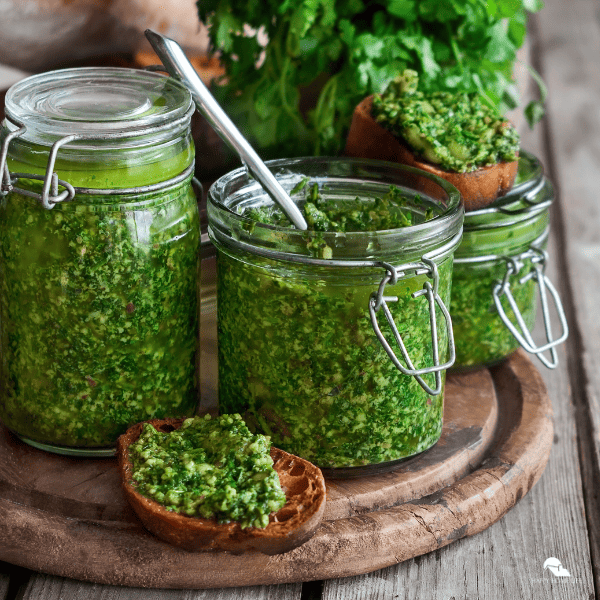
Does a jar of pesto go bad after opening?
Once, jar pesto must be stored in an airtight container and placed in the refrigerator. Although it has a longer shelf life than refrigerated pesto, it can still go bad after opening. The best-before date on the jar is a good guideline, but it’s always important to use your senses to check if it’s still good.
If the pesto has changed color, smells off, or has mold developing, it’s time to toss it out. It’s always better to err on the side of caution regarding food safety and consumes pesto within its recommended shelf life.
How long does Barilla pesto last after opening?
According to Barilla, after opening their pesto, it should be consumed within 5 days. This is a fairly standard time frame for refrigerated pesto products, which typically last for 4-7 days after opening. However, it’s always important to check the label on any pesto product for specific storage and consumption instructions.
Homemade pesto, on the other hand, typically only lasts for 3-4 days in the fridge due to the lack of preservatives. To maximize shelf life, be sure to always store the pesto in a tightly sealed container in the fridge and consume it as soon as possible after opening.
What is pesto
Pesto is a popular Italian sauce made from crushed basil leaves, olive oil, pine nuts, and parmesan or pecorino cheese. It originated in the city of Genoa and has become a versatile ingredient in many dishes, such as pasta, sandwiches, and salads. Pesto has a fresh and fragrant taste, thanks to its ingredients, and has a bright green color.
It comes in two types – refrigerated and shelf-stable and has different shelf lives and storage requirements. Proper storage is essential to prevent the pesto from going bad quickly, and it is best to consume it within a few days of opening.
Knowing pesto’s shelf life
Knowing the shelf life of pesto is highly important, especially if you frequently use this sauce in your cooking. Consuming spoiled pesto can lead to foodborne illness, which can harm your health. Storing pesto properly can help extend its shelf life, preventing it from going bad too soon.
It’s also essential to check the best-before dates of both refrigerated and shelf-stable pesto to ensure that you consume it before it’s no longer safe to eat. By being mindful of these things, you can enjoy pesto without any worries.
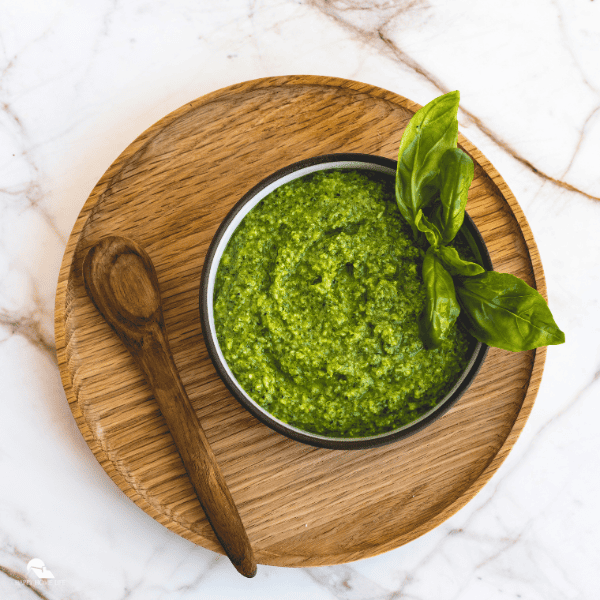
Types of Pesto
Refrigerated pesto
Refrigerated pesto should always be kept cold to prolong its shelf life. Finishing it within a week after opening is advisable as it contains no preservatives. Proper storage can maximize the quality of your pesto sauce. Always keep the container tightly sealed and use clean utensils when scooping the sauce.
Homemade pesto can be stored in the fridge for 3-4 days, while store-bought pesto lasts for 4-7 days after opening. To preserve the sauce for a longer period, Barilla and Buitoni recommend freezing it in freezer-safe containers or ice cube trays.
Shelf-stable pesto
Shelf-stable pesto is convenient for those looking to stock up on this delicious sauce. It can be kept in a cool, dry place like your pantry or cupboard, away from sunlight and heat. This pesto has undergone a pasteurization process or added preservatives, allowing it to have a longer shelf life than refrigerated pesto.
However, once opened, it should be stored in an airtight container in the fridge and consumed within a specific time frame, which is usually provided on the label. Always remember to practice proper hygiene when scooping out pesto from the jar.
Importance of proper storage
Proper storage of any food item is crucial to maintain its freshness and ensure optimum quality and safety. This holds true for pesto as well. Storing pesto correctly can help extend its shelf life and prevent it from going bad.
Using the right container, such as a tall glass jar, and coating the surface of the pesto with an extra layer of olive oil can help prevent the growth of harmful bacteria.
Also, refrigerating and consuming pesto within the designated time frame can ensure that it stays fresh and delicious.
How to store pesto
Pro storage is key to extending the shelf life of pesto. Here are some tips on how to store pesto:
1. Unopened jars of pesto should be stored as per the instructions on the label.
2. Once opened, pesto should be stored in an airtight container and placed in the refrigerator.
3. If the pesto is packaged in freezer-safe containers, it can be frozen and defrosted as needed.
4. Always keep the container tightly sealed and use clean utensils to scoop the product to prevent contamination.
5. Fresh pesto should be consumed within 3-4 days of opening to ensure maximum flavor.
6. Shelf-stable pesto should be kept in a cool, dry place away from sunlight and heat.
Following these guidelines allows you to enjoy your favorite pesto dishes for longer!
The time frame for consuming pesto
When it comes to consuming pesto, it’s important to keep in mind that it has a limited shelf life. Refrigerated pesto typically lasts 1-3 weeks in the fridge, while shelf-stable pesto can last for up to a year. Once opened, all pesto should be placed into an airtight container and stored in the fridge to maximize its shelf life.
It’s best to consume pesto within 3-4 days of opening the container to ensure its flavor is at its best. If you plan on keeping it longer, freezing it can extend its shelf life for up to 2-4 weeks.
Best-before dates for refrigerated and shelf-stable pesto
- When it comes to pesto, knowing the best-before dates for both refrigerated and shelf-stable varieties is crucial. Here are a few key points to keep in mind:
- Refrigerated pesto typically lasts for a couple of days beyond the use-by date and 4 to 7 days after opening the jar or container.
- On the other hand, shelf-stable pesto can last for months without refrigeration and may still be good for a few months beyond the date on the label.
- It’s important to remember that the specific storage time varies between brands, so be sure to check the label for official recommendations.
- Always keep open pesto refrigerated and consume it within the storage guidelines provided by the manufacturer to ensure maximum freshness and safety.
How to tell if pesto has gone bad
If pesto has gone bad, use your senses to inspect the sauce. Look for discoloration, as pesto should be a vibrant green color. If it has turned brown, it is no longer good to eat. Smell the pesto for any off odors. Spoiled pesto will have a rancid or sour smell. If the color and smell seem fine, taste a small amount.
If the taste is off or slightly bitter, it’s time to toss it. Remember to practice proper hygiene and food safety techniques to prevent foodborne illness.
